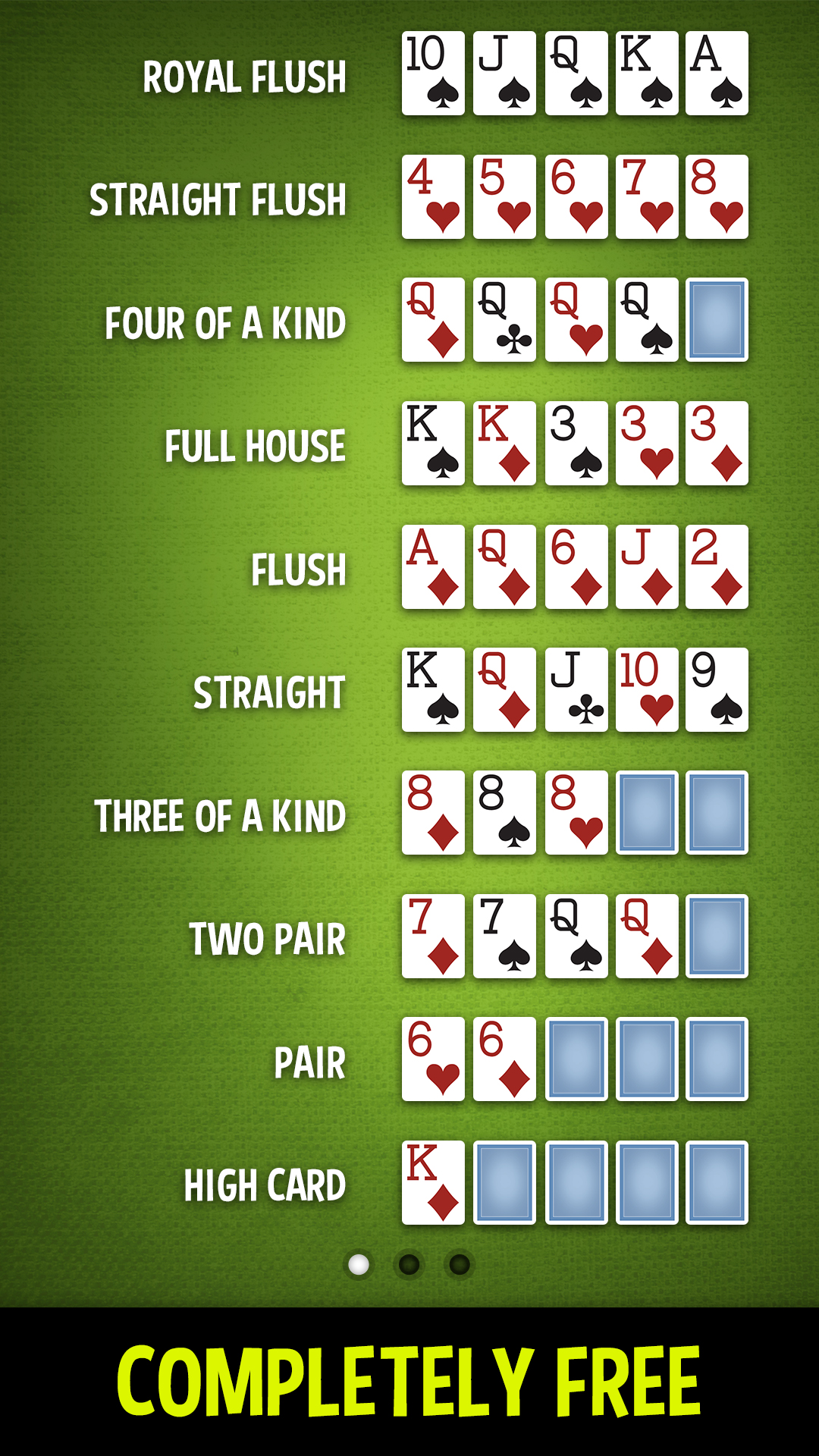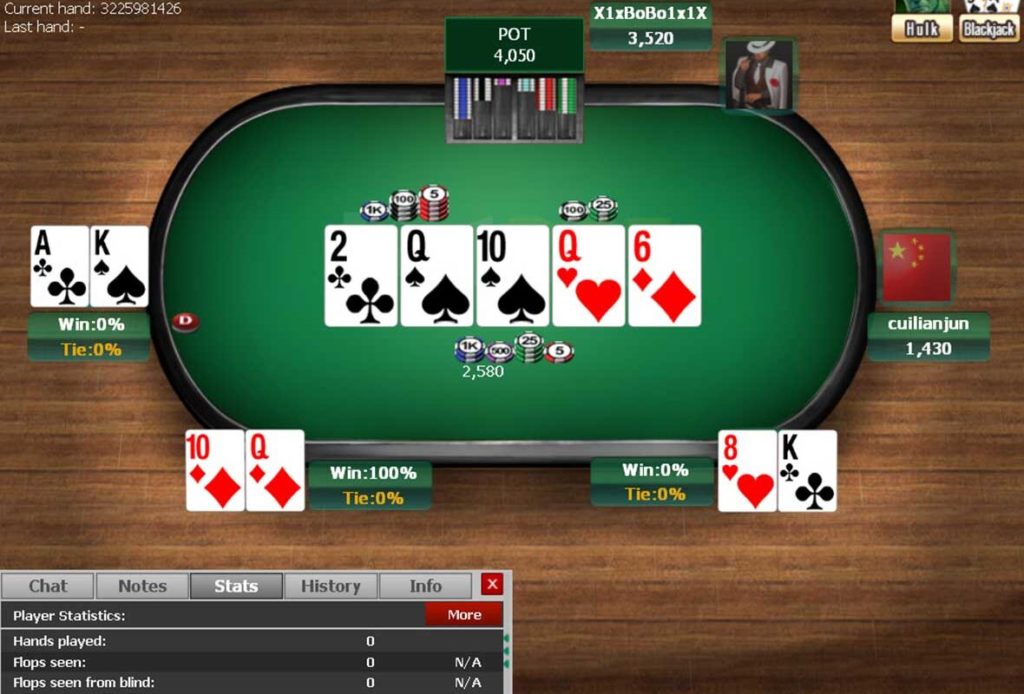Poker Kasabas 1
This page will give you a quick overview of the most common types of poker played today. I will not go into strategies and game theory. Instead, this page is an overview of the game basics, mechanics of playing the game and essentially a “how it works in a nutshell”. An “Intro To Poker 101 Class” if you will.
Poker 101
Hand Ranks
Become a Poker Champion. Get tips and poker strategies from the game’s best players. 1,000s of free games and tournaments - take part in daily free tournaments, Sit & Go’s and ring games in a variety of formats and hone your skills. 1 1 Anakreon ( M 570 M 488): Eski Yunan' da, Sack'ta (Tcos) yaam-t zan.n. S e d i r k a p l b i r s r tepeyi k efetmeye h a zrl a n y o r. Ben teneke kahvalt tabaklarn ykarken Goodloe sr. Tn a vurup ' Sevgili, kahraman Ul ysses ' i m benim,' dedi,' u sihirli belgeyi ver de bir kez daha gz atay m.
- Straight Flush (royal flush is highest). AsKsQsJsTs
- Four of a kind. AAAAK
- Full House. JJJTT
- Flush. AdJd4d6d2d
- Three of a kind. 444AK
- Two Pair 9966A
- One Pair. AAKQ7
- High Card. AKQ95

“The one who bets the most wins. Cards just break ties.”
Sammy FarhaLike Sammy Farha says, poker is a game where whomever bets the most wins the chips, but when it comes time to ‘break the tie, the above hand ranks determine the winner.
These are the hands possible when playing poker. In some of the more exotic styles of the games the ranking of hands change. Specifically if playing Short Deck poker. For most common games like Holdem and Omaha, the above is the ranking of hands.
The player with the highest ranking five card hand wins.
Tournaments And Cash Games
You can play tournaments or cash games. Tournaments are where you buy in for a fixed price and receive tournament chips that are used in the tournament and do not have cash value. Winners of the tourney receive cash payouts based on finishing position.
Tournaments can be a one table tournament, called a ‘sit-n-go’ up to huge tournaments like the world series of poker with thousands of entrants.
A cash game is where you buy in for $100 and get $100 in chips. You can re-load your chips at anytime in between hands by pulling more money out of your wallet. There is no set starting and stopping time. You can get up and cash out all of your chips and leave the table after one hand or one thousand hands. These are commonly referred to as ‘ring games’.
You can not (in most games) remove money from your stack and put it in your pocket while still playing. This is called ‘going south’ or ‘rat-holing chips’ and is usually against the rules of the poker room. It is certainly against poker etiquette.
With a cash game any chips you have in front of you are representations of money directly and you can cash out at any time. If you are playing no-limit then those chips represent the most you are gambling with at that point in time as you can bet them all at any point.

The Main Variations Of Poker
- Texas Holdem
- Omaha
- Short Deck
- 7 Card Stud
- 5 Card Draw
- Crazy Pineapple
- Razz

Texas Holdem
The most played version of poker today is Texas Holdem. You receive two hole cards and five community cards to make your best five card poker hand. This game is easy to learn, hard to master.
Omaha
The second most popular form of poker is Omaha poker. It’s most common format is pot-limit, meaning the most you can bet is the amount currently in the pot.
Omaha is similar to Holdem in the betting structure and how the game works.
The difference is where players receive four cards in their hand and five community cards to make the best five card hand using exactly two hole cards and three community cards.
Omaha vs. Holdem
In Omaha, you’re forced to combine exactly 2 of your 4 hole cards with 3 community cards.
For example, if you’re dealt a 4-5-6-7 and the community cards are 3-9-10-Q, you cannot make a straight. You’re forced to abandon 2 of your hole cards, thereby eliminating your possible straight (i.e. 3-4-5-6-7).
Another major difference is that Omaha is often played in the hi/lo format. Half the pot goes to the low hand and half to the high hand.
Short Deck
The short deck variation of holdem and omaha has been gaining popularity in 2019. The game plays the same format except there are a few differences:
- The twos through fives are removed.
- Ace still plays high and low (so holding an A-6-7-8-9 is a straight).
- Hand ranks are different
Here are the hand ranks for short deck:
- Straight Flush (royal is still the highest)
- Four of a kind
- Flush
- Full House
- Straight
- Three of a kind
- Two pair
- One pair
- High card
The big difference is that a flush beats a full house in short deck (and in plumbing advertising).
Seven Card Stud
Before Texas Holdem became the default poker game, most people played 7 Card Stud Poker (or simply, Stud Poker). In fact, it was the game everyone enjoyed at home on the weekends with their friends. Times have changed and Stud has taken a backseat to other poker variants, like Omaha and Holdem
How To Play Seven Card Stud

Stud Poker follows an ante system rather than using blinds (as in holdem). While the amount of the ante might be different depending upon where you’re playing, it’s usually 1/5 of the small bet on a limit game.
For example, a $5/$10 limit game would require each player to contribute a $1 ante. Once the ante has been posted, each player is dealt three cards – two hole cards face-down and one upcard.
Another forced bet in Seven Card Stud is the bring-in. This is a small amount that is usually 1/4 or 1/2 of the small bet. For example, on a $5/$10 table, it will either be $1.25 or $2.50, depending on the poker room.
Only one player is required to post the bring-in bet: the person who has the lowest exposed card after the initial deal. If more than one player has the same exposed low card, the player seated closest to the dealer’s left must post the bring-in.
The bring-in sparks the first round of betting, which proceeds clockwise.
There are five rounds of betting. Bets and raises during the first two rounds (following Third Street and Fourth Street, respectively) are held at the small bet limit (i.e. $5 in a $5/$10 game).
Poker Kasabas 18
Bets and raises made during the last three rounds (following Fifth, Sixth, and Seventh Street) are held at the big bet limit. Most online poker rooms only allow three raises per round of betting.
With the above in mind, it’s important to highlight one exception. Following Fourth Street, bets and raises are normally limited to the small bet. However, if a player’s board is showing a pair, any active player can choose to post the small bet or big bet. Once a player has posted the big bet, all other active players must follow suit with their subsequent calls and raises.
To explain how each round of betting progresses, let’s go back to Third Street. As noted, the bring-in bet starts the first round of betting. The play moves clockwise from the person who posted the bring-in. Each player can take one of three actions:
- call the bring-in
- complete the bet
- fold

Completing the bet simply means to raise it to the lower limit. For example, if the bring-in on a $5/$10 limit table is $1.25, a player can call it, or complete the bet by raising $3.75 (i.e. $5 less $1.25).
Once every player has either called, raised, or folded, another card is dealt face-up. This is Fourth Street. It triggers a new round of betting. The person who has the highest ranking cards showing makes the first move by checking, betting, or folding. Betting progresses clockwise around the table. Once the round has completed, another upcard is dealt to each player. This is Fifth Street.
Betting following Fifth Street proceeds in the same manner as the previous round. It begins with the player who has the highest ranking board, and goes clockwise around the table. Bets and raises must meet the higher limit (i.e. $10 in a $5/$10 game). Once this round completes, each player receives another upcard, called Sixth Street.
After Sixth Street has been dealt, a new round of betting begins. Again, the person with the highest ranking cards showing is the first player to take action. All bets and raises must meet the big bet limit, similar to the previous round. Once betting finalizes, each active player receives a final card. It is called Seventh Street and is dealt face-down.
A last round of betting follows Seventh Street. If more than one player remains active after the round completes, players show their hands to take down the pot. The person who can make the highest ranking 5-card hand from the seven cards that have been dealt wins the pot.
Stud Poker Hi-Low Variation
Seven Card Stud Hi Low (sometimes called Stud Eights or Better) is played in the same manner as Stud Poker – with two differences.
- First, rather than a single player taking down the pot, the pot is split between at least two players. The person with the lowest ranking hand (according to the Ace to Five ranking system) splits the pot with the person who has the highest ranking hand.
- Second, Seven Card Stud Hi Low is played with a qualifier; the player with the low hand must meet an “eight or better” standard. That means all five cards in that person’s hand must be equal to eight or lower in order to qualify. It is possible for the player with the highest ranking hand to “scoop” the entire pot if no active player can qualify for the low hand.
5 Card Draw
You can not find this game offered online or at any of the casino tournaments surrounding the WSOP or the circuits at the moment, it’s more of a play at home poker game.
Here is how it works. Players are dealt five cards and there is a round of betting, one draw and then a final round of betting then showdown.
Get five cards, bet, discard/draw and bet again, showdown.
Each person has the option of exchanging one to five hole cards for new ones, or declining the draw. Once every player has had the chance to draw or decline, the second and final round of betting begins. The action starts with the person sitting to the immediate left of the button.
After this final betting round is showdown, where cards are revealed and winners are declared.
When a Joker is used, it can represent an Ace, or complete a straight, flush, or straight flush. It cannot be otherwise used.
Crazy Pineapple
Crazy Pineapple is a fun home-game played version of poker you will find every now and then in a dealers choice game. It plays similar to holdem with a few tweaks. There are a handful of variations of pineapple as well, this one is the ‘crazy’ variation.
Players get three cards, one of which is discarded after the flop in the ‘crazy’ variation of the game. Regular ‘pineapple’ poker has the rule where you discard before your first round of betting.
The game flows like holdem otherwise. So in a nutshell you get three cards, have a round of betting, see the flop and discard a card and have a round of betting, discard a card, and then play the turn and river like normal.
Razz
Unlike Texas Holdem and Omaha, Razz poker is a “low” game. It uses an “Ace to Five” hand ranking system, which we’ll explain in more detail below. Flushes and straights are not recognized. That is, neither influences your hand’s ranking value.
Also, keep in mind this rule of thumb:
- Aces are always low
What the above implies is that a 5-4-3-2-A (known as a “wheel”) is the best possible hand you can have when playing Razz poker. That’s because straights are not recognized, which makes a wheel the hand with the lowest value.
The Ace to Five ranking system takes a little time to get used to, but should be familiar if you’ve played Stud Hi Lo or Omaha Hi Lo.
Hand Valuations In Razz
Each hand in Razz poker is evaluated from its highest ranking card to its lowest ranking card.
For example, consider the following two hands…
- Q-Q-7-4-3
- Q-Q-7-5-2
Hand #1 has a lower value than hand #2 based on comparing the fourth card (i.e. 4 versus 5). Similarly, a 7-7-5-4-3 would beat (i.e. have a lower value than) a 7-7-6-4-3.
There is no qualifier used in Razz poker. Even if you have a pair of sixes and a pair of fives, you’ll win the pot if your two-pair hand has the lowest value going into the showdown.
To further clarify the Ace to Five ranking system used in Razz, here’s an example of 10 hands that are ranked from highest value to lowest:
- 6-6-6-4-4
- J-J-5-4-3
- 4-4-7-6-5
- A-A-8-7-6
- Q-J-T-9-8
- Q-J-T-9-5
- 7-6-5-4-3
- 7-6-5-4-A
- 6-4-3-2-A
- 5-4-3-2-A
You’ll notice the above list is consistent with the rule that straights and flushes are not recognized, and pairs are high. As you would expect, a three of a kind (as in hand #1) is unlikely to win a pot.
The Ante, Deal, Bring-In, And Third Street
Each hand begins with all players posting an ante (there are no blinds). The amount of the ante is usually 20% of the small bet. In a $3/$6 limit game, the ante would be $.60.
Once the ante has been posted, cards are dealt starting with the player to the dealer’s immediate left. Each player receives two hole cards face-down and a single card face-up. The upcard is called the Third Street.
The person with the highest-ranking upcard is required to post a bring-in bet. The amount of the bring-in is usually held at 25% or 50% of the small bet, but that varies by the game.
If two or more players tie with the highest-ranking upcard, the bring-in is decided by suit. The highest suit posts the bring-in according to the following order (from highest to lowest rank):
- spades
- hearts
- diamonds
- clubs
The player who “brings in” can choose to raise by posting up to the small bet. Otherwise, he can keep it at the bring-in.
There are 5 rounds of betting in Razz poker. Three raises are allowed during each round. In limit games, bets and raises during the first two rounds are usually held at the small bet (i.e. $3 on a $3/$6 table). The latter three rounds are bumped to the big bet.
Back to Third Street…
After the bring-in has been posted, betting proceeds clockwise with each player either calling, raising, or folding.
Fourth, Fifth, And Sixth Streets
The next round begins with each player receiving a single upcard. This card is called Fourth Street. The betting starts with the player who has the lowest hand showing. (At this point in Razz, the lowest show hand is an A-2.) If two or more players have the same lowest-ranking exposed cards, betting begins with the person seated nearest the dealer’s left side.
As betting progresses clockwise, each person can choose to call, raise, or fold. Bets and raises are kept at the small bet limit during the Fourth Street round.
The next round opens with each player receiving another upcard. This called is called Fifth Street. The lowest-ranking show hand starts the betting, but all bets and raises are bumped to the table’s big bet limit.
Once the betting following Fifth Street has finished, another card is dealt face-up to each player. This card is called Sixth Street.
At this point in the hand, each person has two hole cards face-down and 4 upcards.
Another round of betting starts with the player who has the lowest hand showing. Bets and raises must meet the game’s big bet.
Poker Kasabas 100
Seventh Street And Showdown
The final round begins with each person receiving a single card face-down, known as Seventh Street. Though it’s rare, there are times when all 8 players are still active. If that’s the case, there will not be enough cards for each person to receive one. The dealer will instead place a single community card (face-up) in the middle of the table.
Betting following Seventh Street progresses in the same manner as during previous rounds. It starts with the player who has the lowest hand showing, and all bets and raises are kept at the big bet limit.
If multiple players are still active, the last person to bet is the first to show their hand. The showdown proceeds clockwise. The winner claims the pot and a new hand begins.